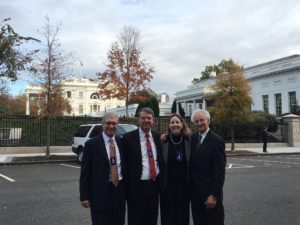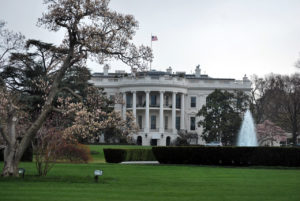“Madam President”: Why Hasn’t the U.S. Elected a Woman POTUS?
Written by Barbara A. Perry, the White Burkett Miller Center Professor of Ethics and Institutions at UVA and Presidential Studies Director at the Miller Center. You can follow her on Twitter @BarbaraPerryUVA.

Last year I saw the film Suffragette about the early 20th century battle for women’s suffrage in Britain. At the end of the closing credits appeared a list of every country that had granted the vote to females and in what year, along with a dwindling group of nations that continue to deny access to the ballot box for half their population. Even more striking was the year in which some countries had elected a female president or prime minister. Such a list will continue to note that nearly a century has passed with women’s national suffrage in the U.S. but without a female president. Why? This quintet of reasons comes to mind:
- Systemic factors: Parliamentary governments, where prime ministers typically come to power after building coalitions in and rising through the ranks of their parties, reward collegial characteristics that are particularly prevalent among women. The American presidential system, however, requires that candidates run nationwide, a more daunting task, especially in such a diverse country. And then there are the idiosyncrasies of the Electoral College.
- Historic precedents: All 44 U.S. presidents have been males, and the nation only knows one gender at the helm as commander in chief. If a woman appears strong in order to carry out that role, she risks being labeled “unfeminine”; yet, if she emphasizes softer traits, voters question her courage and endurance.
- Leadership models: Paradigms of American presidential leaders are associated with male traits and characteristics. “Priestly king” is the label one scholar has applied to how Americans see their chief executives. Another model is the charismatic figure who leads men into battle, and, from the beginning, Americans have been drawn to military heroes for president. Think Washington, Jackson, both Harrisons, Taylor, Grant, Hayes, Garfield, Arthur, Theodore Roosevelt, Eisenhower, Kennedy, and George H. W. Bush. A bit hard for women to prove themselves on the battlefield when laws have excluded them from combat and protected them from conscription. Some presidents have been viewed as father figures or judges, the latter another career to which women could aspire only recently. Other chief executives have trained as engineers, like Hoover and Carter, a profession where women were also unwelcome.
- Societal constructs: Because only males have been president, women have no precedents to follow on how they should look and dress in order to appear “presidential.” A dark suit and red or blue necktie exude power and competence for modern presidents. If only women politicians had it so easy in that department! Trousers, dress, skirt; shoes; wardrobe colors; jewelry; hairstyle; make-up; anti-aging treatments: all choices by women aspirants are minutely dissected by pundits, journalists, voters, and fellow candidates. And woe to the female politician who has a figure that attracts scorn. Yet portly presidents used to be the norm, and, as Donald Trump proved, an unusual haircut and hue are no barriers to the White House for a man.
- Voting cues: Political scientists have concluded that party, rather than gender, guides most women voters. That makes sense in light of how diverse American women are. Why would we presume that they would vote as a monolithic bloc?
Only three females have appeared on major party presidential tickets in American history: Geraldine Ferraro in 1988; Sarah Palin in 2004; and Hillary Clinton in 2016. Each lost the presidential/vice-presidential race. As the first woman to garner a major party’s presidential nomination, Mrs. Clinton faced all of the above headwinds, in addition to the baggage that she carried from her husband’s presidency and her own missteps along the way. Even so, she won the popular vote by more than one million but could not overcome the constitutional mandate of the Electoral College.
Ultimately, pairing women’s suffrage with election of female leaders produces an inaccurate correlation—at least in the United States. After all, women fight for equal justice under law in order to avoid gender stereotypes, which include presuming that women will vote for candidates simply because they share the same chromosomes. In fact, only a little more than half of women voters (54 percent) cast their ballots for Hillary Clinton. Contrast that figure with 83 percent of Catholics who voted for John F. Kennedy in 1960 and 96/93 percent of African Americans who voted for Barack Obama in 2008/2012.
Could a female candidate, as qualified as Hillary Clinton, minus her flaws, have won in 2016? Or will systemic, historic, societal, and partisan factors all have to evolve in order to permit the first woman president to occupy the Oval Office?
- Stay on Track: Turning Resolutions into Results
- From “Jimmy Who?” to “What Would Jimmy Do?”
- Washington’s Bold Gamble: Christmas Day 1776
- UVA Club of Pasadena: Cavs Care Gathering at the Raymond
- UVA Club of Boston: UVA Men's Basketball Game Watches
- UVA Club of Richmond: Tour of the Valentine Museum
